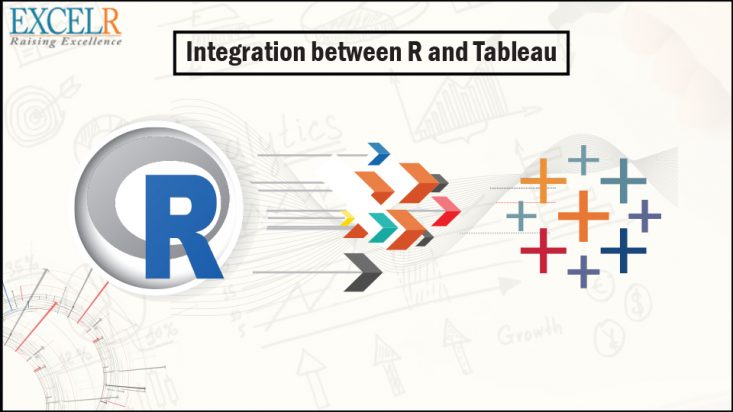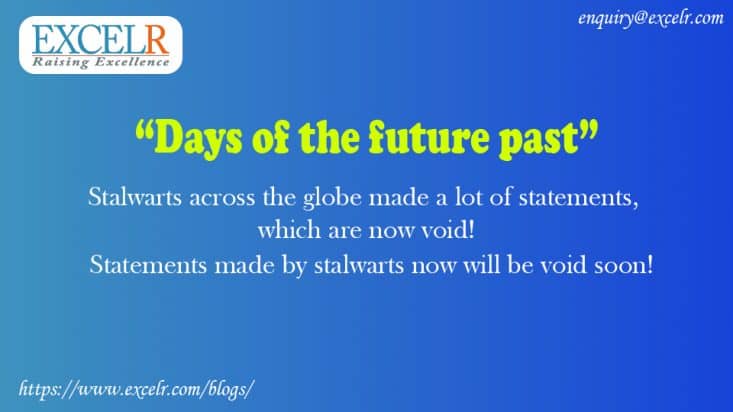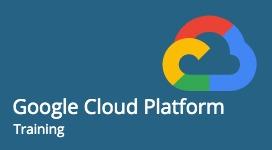R is an open source resource for performing statistical analysis. The desktop table can now be connected to R using the enumerated fields to take advantage of R functions, libraries, packages and stored models. These figures will strongly influence the R engine and transfer prices to R with the R service package, and then return to Tableau.
The Tableau Server can also be configured to connect to the Rserve mode via the tabadmin app, which allows anyone to view a dashboard containing R functionality. Combining R and Tableau enables the delivery of in-depth statistical analysis in the field of drag and drop visual analytics diagrams.
What R
R is a popular mathematical language used to perform complex mathematical analyzes and forecasting analytics, such as direct and offline modeling, mathematical tests, time series analysis, division, integration, etc.
The R-console mainly uses the command line interface, but there are also many GUI tools available to download to make writing R programs easier (most of them are free). With R, users can create variables, formulas, functions, and graphs to visualize their analysis and predictions.
As a free language and open source, there is a community of donors who are constantly making new R packages (extensions) that describe high-quality mathematical functions that were not originally built on R. These packages can be downloaded for R to extend the Power of R. Most of these packages are also being developed and made available for free. It is for this reason that R is very popular and why it continues to gain performance over time.
R language programming language and free computer arithmetic software and graphics supported by the R Foundation for Statistical Computing. The R-language is widely used among mathematicians and data miners for statistical software development and data analysis.
Why use R?
Data science shapes the way companies run their businesses. Without a doubt, staying away from Artificial Intelligence and Machine will lead to the company failing. The big question is which tool / language should you use?
There are many tools available in the market for data analysis. Learning a new language takes time to invest. The diagram below shows the learning curve compared to the business potential of language. Negative relationships mean no free lunch. If you want to give a better understanding from the data, you will need to spend some time learning the right tool, which is R.
Features of R
The other important features of R are as follows:
It is a free and open-source programming language issued under the GNU (General Public License).
It has cross-platform interoperability which means it has active distribution on Windows, Linux, and Mac. R code can be easily sent from one speaker to another.
It uses an interpreter instead of a compiler, which makes code development easier.
It integrates well with a variety of data, and excels at importing data from Microsoft Excel, as well as Microsoft Access, MySQL, SQLite, Oracle, etc.
Flexible language that closes the gap between Software Development and Data Analysis.
Provides a variety of packages for a variety of codes, functions, and features for data analysis, statistical modeling, visualization, Machine Learning, and data import and management.
It integrates a variety of powerful communication tools with various formats such as CSV, XML, HTML, and pdf, and even interactive websites, with the help of R packages.
Steps to Perform Data Analysis in R
Import: The first step is to import data into R. It means you take data stored in files, databases, HTML tables, etc., and then upload it to the R data frame to perform data analysis on it.
Convert: In this step, for the first time, we compile our data by making each column dynamic, and each row being recognizable. Once we have the data collected, we subtract it to gain recognition of our interests, create new variables that are functions of existing variables, and obtain summarized observations.
What is a Tableau
Tableau is a powerful and fast-growing data display tool used in Business Intelligence Industry. It helps to simplify raw data in an easily understandable format.
Data analysis is much faster with Tableau and visualization done in the form of dashboards and worksheets. The information created using the Tableau can be understood by an expert at any level in the organization. It also allows non-professional users to create a custom dashboard.
Why Tableau?
Why use Tableau software when there are so many tools available to perform data detection?
Tableau is widely used because data can be quickly analyzed. Also, visuals are generated as dashboards and worksheets. The table allows one to create dashboards that provide information that can work and move the business forward. Table products are always working in well-planned environments where they are configured with a functional and hardware system. Tableau is used to test data with unlimited visual statistics.
What is a Tableau used for?
Use of Tableau software is listed below:
Tableau software is used to translate queries into demonstrations.
It is also used to manage metadata.
Tableau software imports data of all sizes and widths.
For the non-tech user, Tableau is a life saver as it provides a place to create 'no-code' data queries.
The best feature of the Tableau is these
Data Integration
Real-time analysis
Data interaction
The great thing about Tableau software is that it doesn't require any technical or any kind of programming skills to operate. The tool has garnered interest among the people from all sectors such as business, researchers, different industries, etc.
The Tableau Product Suite consists of
- Tableau Desktop
- Tableau Public
- Tableau Online
- Tableau Server
- Tableau Reader
Developer Tools: The Tableau tools that are used for development such as the creation of dashboards, charts, report generation, visualization fall into this category. The Tableau products, under this category, are the Tableau Desktop and the Tableau Public.
Sharing Tools: As the name suggests, the purpose of the tool is sharing the visualizations, reports, dashboards that were created using the developer tools. Products that fall into this category are Tableau Online, Server, and Reader.
How does Tableau integrate with R?
R functions and models can now be used in Tableau by creating new calculated fields that dynamically invoke the R engine and pass values to R. The results are then returned back to Tableau for use by the Tableau visualization engine.
How to Integrate R and Tableau
Inside R software, install Rserve package with below command. install.package(Rserve) ...
Step2: Now we move to Tableau to perform connection to the server we just started. ...
Step3: Go to Analysis Tab and select Create-Calculated-Field. ...
Step4: Drag and Drop the Fields to Visualize data.
Who is this feature intended for?
This feature is primarily targeted for users who are already proficient at R. It is NOT meant for beginners with R. Anyone who wishes to use the new functions must first learn how to use R in order to leverage its capabilities in Tableau.
Users who are already proficient with R will find the integration beneficial for several reasons:
They will be able to do statistical analysis on their Tableau data.
They will be able to access any R package or function that has been installed in an R server which they can access.
They will be able to take advantage of all of the visualization capabilities in Tableau to further analyze and understand their data without having to manipulate their data in R (which can be cumbersome) for the same effect.
Pre-requisites for using the feature include:
Users must have proficiency with the R language to write the appropriate scripts and functional calls they require.
In a nutshell,
R is a great tool to explore and investigate the data. Elaborate analysis like clustering, correlation, and data reduction are done with R . This is the most crucial part, without a good feature engineering and model, the deployment of the machine learning will not give meaningful results.
Tableau is basically a data visualization tool which provides pictorial and graphical representations of data. Excel is basically a spreadsheet for working with data in rows and columns. You need to first represent your data into a tabular format and then you can apply visualizations on top of it.





.PNG)
.PNG)






